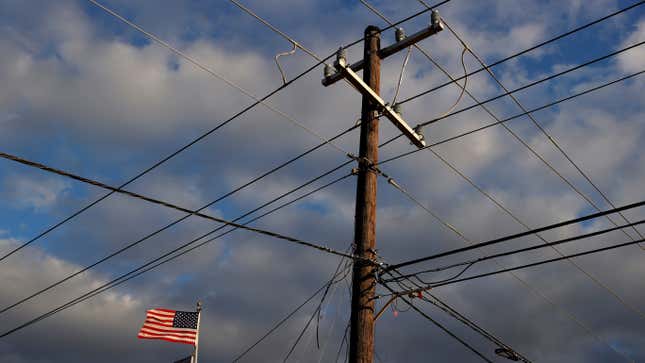
Texas has a utility market unlike any other in the U.S., and in the wake of last week’s grid failure there that left millions of people in the dark, it’s come under scrutiny. Ninety percent of Texas’ electricity is generated on its own grid, and that grid is very lightly regulated.
That makes it subject to the market’s ebbs and flows. While the argument for this structure was that it would make electricity cheap, that’s simply not the case. According to a Wall Street Journal analysis of national Energy Information Administration data, customers of that deregulated energy market have paid a total of $28 billon more for their power since 2004 than they would have paid if they’d been covered by the state’s traditional utilities.
In 1996, Texas deregulated its energy grid. ERCOT—the grid operator which serves all of the state besides El Paso, the upper Panhandle, and parts of East Texas—became the country’s first-ever independent system operator, moving away from the regulated utility model that the rest of the country uses. Since then, ERCOT has operated as an open marketplace for distributing power to customers.
The theory was that the deregulated electric market allowed ratepayers shop around for the lowest energy prices. But overall, it turns out, customers who buy energy on the deregulated market have been paying way more for their electricity than Texans who are covered by traditional utilities. Those traditional utilities’ energy prices averaged 8% lower than the nationwide average rate from 2004 to 2009. By contrast, ERCOT’s rates were 13% higher on average than the federal rate.
The revelations come after last week’s cold snap in Texas during which the ERCOT grid failed. Texans who didn’t lose power are seeing energy bills that have climbed as high as $17,000. Texas officials have put some important emergency stopgap measures in place for those facing these bills, but residents could still be paying them off for decades to come.
It’s worth noting that the deregulated utility market has made some good things possible. Since the open market benefits cheap energy sources, its model has forced the closure of coal plants that were proving too expensive to compete. This has been great for many Texans, resulting in keeping 150,000 tons of air pollution from being emitted. Coal plant closures are also good news for the climate, since it’s a major source of carbon dioxide, though the state grid is about average when it comes to carbon intensity. The deregulated market has also been a huge boon for wind energy—wind is cheap to produce, so Texans want to pay for it.
But clearly, these gains have come at a huge cost to people’s bills, which shouldn’t be the case. It’s time to make it so electricity is generated based on what’s best for the planet and users, not just what’s best for power companies’ profits. And it’s also time to up regulation (or better yet, move toward public ownership) to make sure people’s access to a basic need isn’t dictated by the market’s whims.